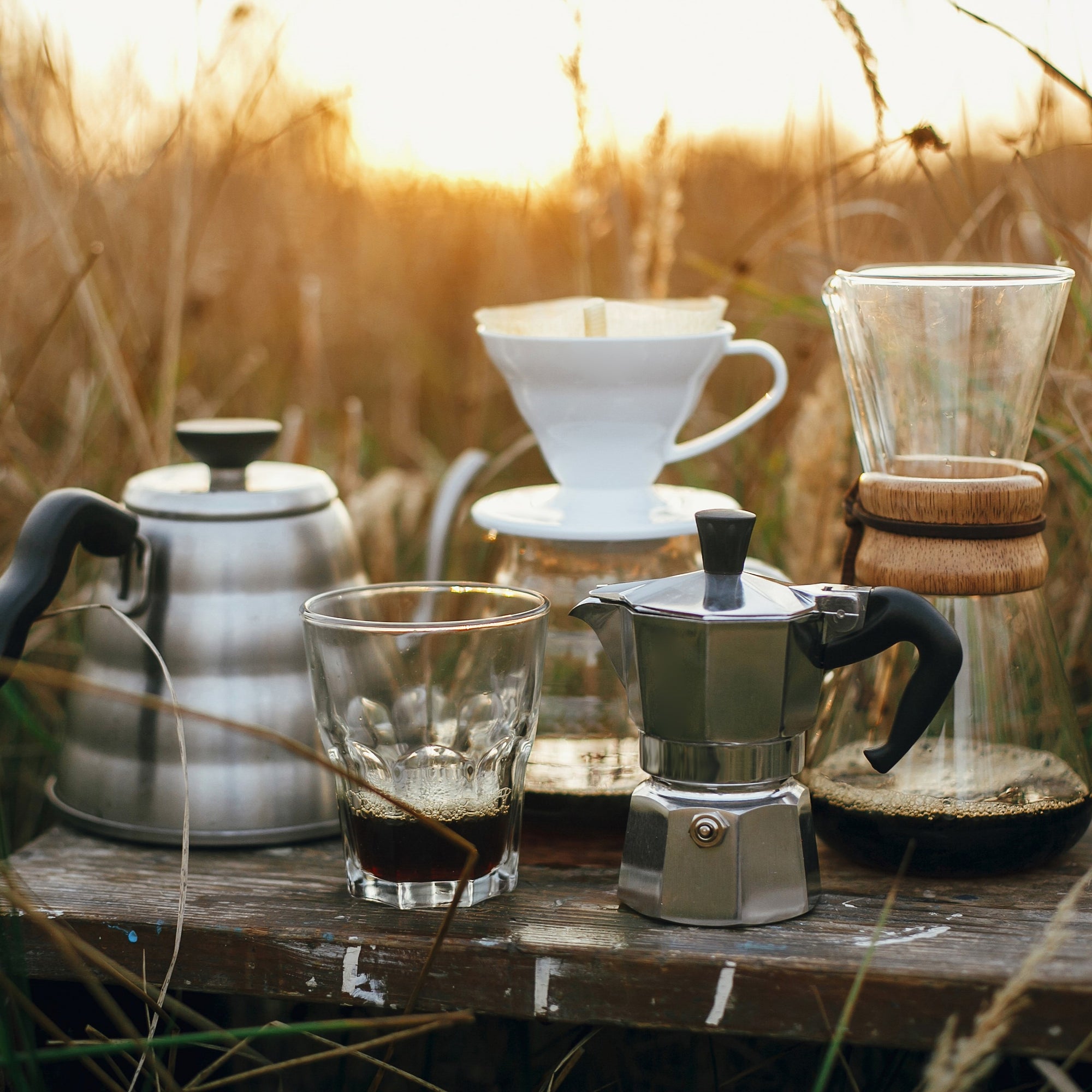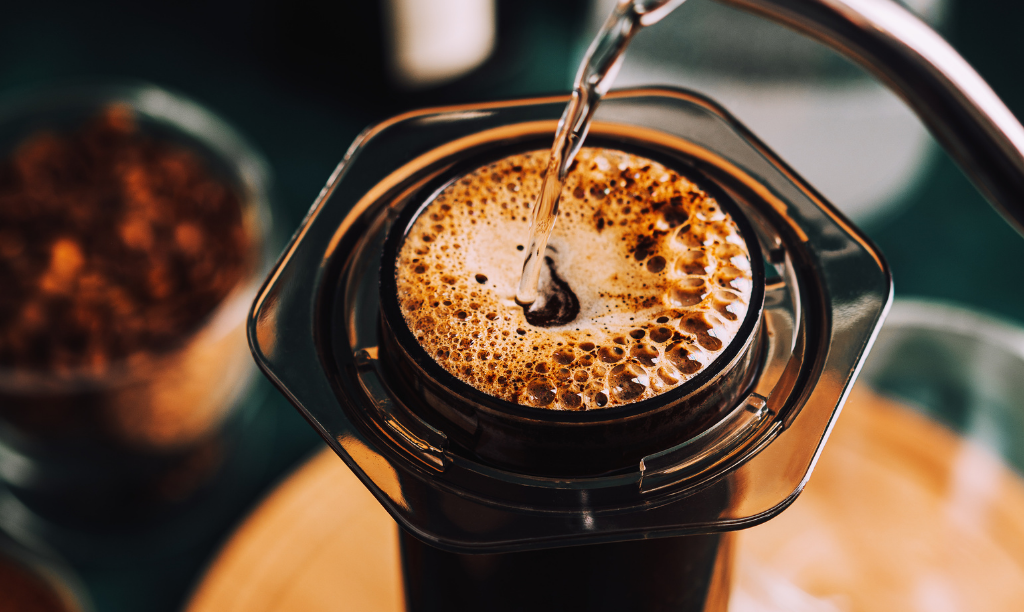Finding the Art of Coffee Brewing Methods: Tips for Every Enthusiast
Finding the Art of Coffee Brewing Methods: Tips for Every Enthusiast
Blog Article
The Scientific Research Behind Coffee Developing: Just How Temperature Level and Time Affect Your Drink
Recognizing the science behind coffee brewing discloses that temperature and time are not plain variables yet crucial aspects that dictate the drink's flavor account and overall top quality. As we explore the subtleties of these aspects, the question develops: how can one properly balance temperature level and time to attain that best brew?
The Chemistry of Coffee Removal
The chemistry of coffee extraction explores the elaborate procedures that transform raw coffee beans right into the aromatic drink delighted in worldwide. This makeover mainly entails the solubility of different substances present in the beans, which are affected by factors such as grind dimension, water quality, and the developing approach utilized.
Throughout the developing process, warm water acts as a solvent, drawing out soluble substances, including high levels of caffeine, sugars, lipids, and acids, from the coffee grounds. Each compound adds to the taste account, aroma, and body of the final drink. As an example, acids are in charge of brilliant and zesty notes, while oils contribute to a rich mouthfeel.
The initial stages of developing extract acids and sugars, leading to a pleasurable acidity, while extended extraction can lead to resentment due to over-extraction of undesirable compounds. Understanding these chemical interactions is important for enhancing brewing techniques, as the equilibrium in between extraction time and water temperature can significantly affect the general high quality of the coffee.
Ideal Developing Temperatures
Locating the best brewing temperature level is crucial for opening the full potential of coffee tastes and scents - coffee brewing methods. Research shows that the ideal range for developing coffee lies in between 195 ° F to 205 ° F(90 ° C to 96 ° C) Within this variety, the extraction procedure successfully dissolves the preferable soluble compounds in coffee beans, bring about a flavorful and well balanced cup
Developing at lower temperature levels, such as listed below 195 ° F(90 ° C ), may lead to under-extraction, yielding an acidic and weak brew with low-key flavors. Conversely, brewing at temperatures surpassing 205 ° F(96 ° C) can result in over-extraction, generating a bitter and extreme preference due to the too much dissolution of undesirable substances, such as tannins.
Furthermore, the perfect developing temperature level can vary depending on the coffee bean type and roast degree. For example, lighter roasts usually gain from a little higher temperature levels to enhance their complicated taste profiles, while darker roasts may be better fit to reduced temperatures to alleviate bitterness.
Ultimately, keeping accuracy in developing temperatures is crucial for accomplishing a harmonious equilibrium of tastes, guaranteeing that every mug of coffee delivers a gratifying sensory experience.
Influence of Developing Time
Developing time plays an essential function in identifying the flavor profile and general high quality of coffee. Much shorter developing times can result in under-extraction, leading to a sour or weak flavor, as not adequate soluble substances are liquified.
Optimal developing time varies depending upon the approach utilized and the work dimension of the coffee. A French press typically calls for about four minutes, while coffee extraction is usually completed within 25 to 30 seconds. It is necessary to calibrate brewing time in conjunction with other variables, such as water temperature level and coffee-to-water ratio, to accomplish the preferred taste account.
Understanding the effect of developing time enables coffee fanatics to fine-tune their brewing techniques, ultimately sites enhancing the sensory experience of their mug (coffee brewing methods). With cautious interest to this variable, one can unlock the full possibility of the coffee, exposing its one-of-a-kind characteristics and subtleties
Developing Approaches and Their Impacts

As an example, approaches like French press and chilly brew enable a much longer steeping time, leading to a fuller body and durable flavor because of boosted removal of oils and soluble solids. Alternatively, coffee developing utilizes high pressure and a much shorter removal time, producing a focused shot that stresses extreme flavors and a rich crema.
Pour-over techniques, such as Chemex or V60, offer an even more regulated extraction procedure, allowing the maker to control circulation rate and water circulation, which can enhance brightness and clarity. Percolation techniques cycle water via the coffee grounds multiple times, leading to a more powerful, frequently bitter taste.
Last but not least, the use of paper filters versus steel filters can additionally impact the last preference; paper filters commonly generate a cleaner mug by capturing oils and fine particles, while steel filters enable more oils to travel through, adding to a fuller mouthfeel - coffee brewing methods. Recognizing these nuances can raise the coffee experience considerably
Tips for Perfecting Your Brew
A well-executed mixture can change also the most basic coffee into an exceptional experience. Grind the beans just before brewing to maximize freshness, ensuring the work dimension matches your developing method-- coarser for French press and finer for espresso.
Water high quality plays a crucial function; use filteringed system water cost-free from impurities. The ideal developing temperature level ranges in between 195 ° F and 205 ° F(90 ° C to 96 ° C ) Too warm can blister the coffee, while too amazing may under-extract flavors.
Timing is just as vital. For immersion approaches, steeping for three to 5 mins is ideal, whereas drip methods typically take around 5 mins. Trying out brew times to locate your favored strength.

Conclusion
In summary, the complex connection between temperature level and time is critical in the coffee brewing process. Adhering to ideal brewing temperature levels in between 195 ° F and 205 ° F, together with specific timing customized to every approach, ensures the wanted flavor account is attained. Recognizing these scientific principles encourages people to improve their brewing techniques, inevitably leading to a more well balanced and enjoyable coffee experience. Proficiency of visit these elements is essential for any kind of coffee fanatic looking for excellence in their beverage.
Comprehending the scientific research behind coffee developing exposes that temperature level and time are not mere variables however crucial elements that dictate the beverage's taste account and general quality. Comprehending these chemical interactions is crucial for optimizing developing techniques, as the equilibrium in between removal pop over to this web-site time and water temperature level can considerably affect the overall quality of the coffee.Brewing time plays a critical duty in determining the taste account and general high quality of coffee. By concentrating on these aspects-- bean top quality, grind size, water temperature level, soaking time, and proportion-- you can raise your coffee developing process, resulting in a regularly remarkable mug.
In summary, the detailed relationship between temperature level and time is paramount in the coffee brewing process.
Report this page